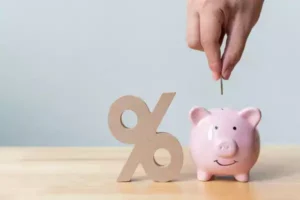
When people first enter the world of investing or trading, they will come across the word leverage. It may sound complex at first, but the idea is simpler than many expect. The basic question is, what is leverage (leverage คืออะไร)? It is important to understand its meaning to help boost profits. Also, it increases risks if not handled wisely.
Leverage means borrowing money to make bigger investments than you could with just your own cash. Think of it like using a loan to start a small business. You borrow funds so you can operate on a larger scale right away, rather than waiting to save enough. It works similarly in trading, using a small amount of your money to control a much larger position/
Why do people use leverage?
The main reason investors and traders use leverage is to grow their potential profits.
For example:
If you had $1,000 to trade, without leverage, your gains would be limited. But with a leverage ratio like 1:100, you could control $100,000 worth of assets. Even a small price change could bring bigger returns than if you were trading only with your original money.
Leverage also makes markets more open to everyday people. Only big institutions had enough funds to trade in high volumes years ago. Smaller traders can participate in markets through leverage, such as:
- forex
- stocks
- commodities
Traders can participate without needing huge amounts of capital.
The risk you must not ignore
Leverage is not a free shortcut to success. Just as it can multiply profits, it can also multiply losses. Using high leverage means a tiny move in the wrong direction can quickly wipe out your entire investment. For instance, with very high leverage, even a 0.5% drop unfavored to your position could cause major losses.
Therefore, financial regulators in many countries set limits on how much leverage brokers can offer. These rules are meant to protect beginners from losing too much, too quickly.
Using leverage the smart way
Leverage can be helpful, but only if it is managed carefully. Experienced traders do not always use the maximum leverage available. Instead, they choose moderate levels that give them extra power without too much danger.
Some practical steps that can make a huge difference, such as:
- setting stop-loss orders
- starting with smaller positions
- avoiding the temptation to “go all in”
Think of it like driving a fast car. Just because the car can go 200 km/h does not mean it is safe to drive that fast on every road.
Beyond trading: Leverage in real life
Leverage is not limited to trading. Companies use borrowed money to grow their businesses, such as:
- opening new branches
- buying equipment
If their investments succeed, the borrowed funds help them earn more. But if things do not go as planned, they still owe the money. It can lead to financial trouble when not managed well.
Leverage is common in the world of real estate. Many people take out loans to buy properties, hoping that rent or rising property values will cover the costs and bring in profit. While this can work well, it also carries the risk of debt if the market turns down.
Finding the balance
Leverage is a powerful tool, but it is a double-edged sword. Traders and investors achieve their goals faster with knowledge and discipline. Used carelessly can lead to losses that are difficult to recover from.
Conclusion
The secret of successful leverage should have balance. Learning how it works and practicing with smaller trades can help you make it grow with the right planning. Mastering leverage is about knowing how to use it wisely and not using it anytime.







